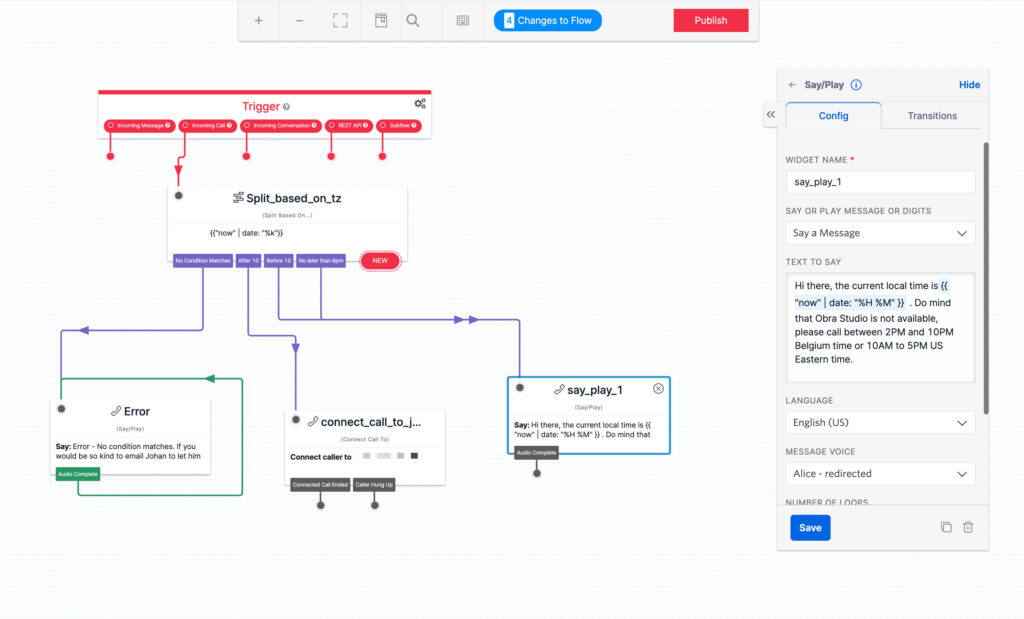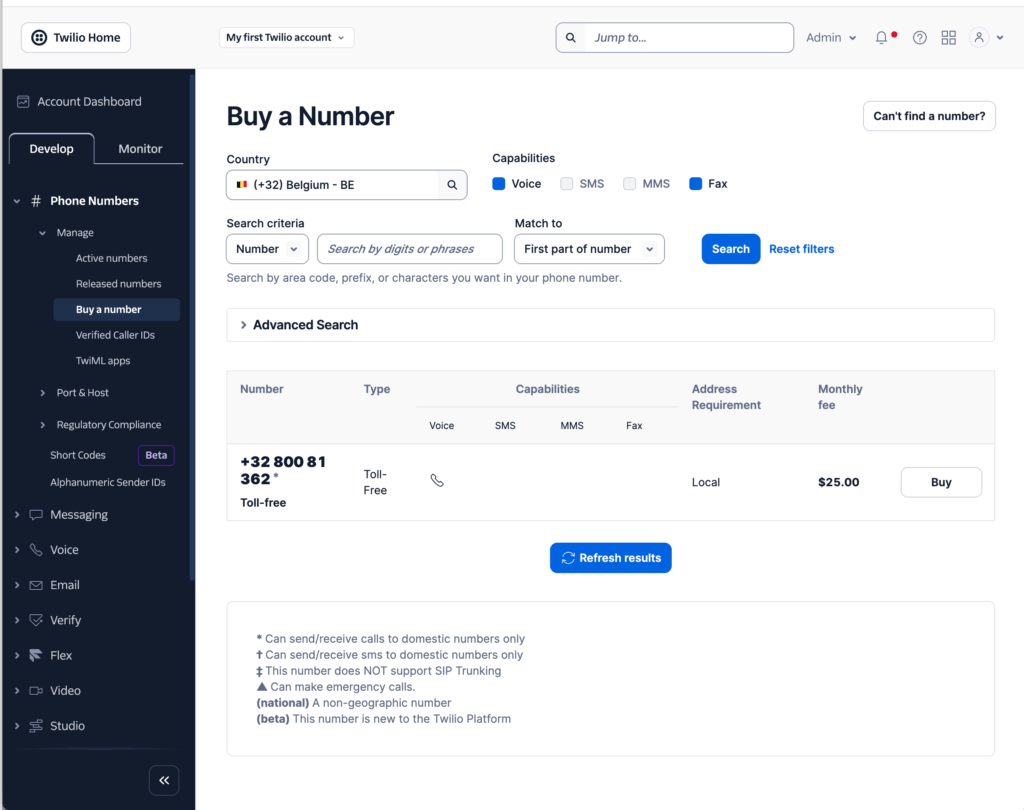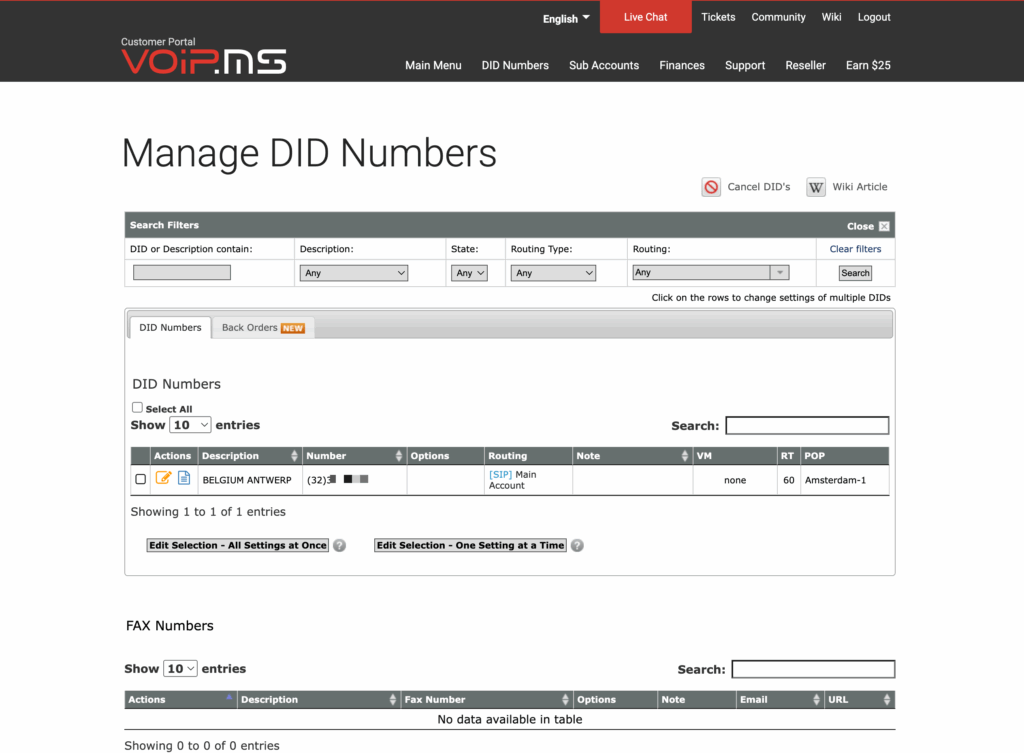During my Sunday biking, I was listening to this super interesting podcast about outbound Saas sales from WeLoveSaas. For my English readers, unfortunately, that podcast is in Dutch. But for those who speak Dutch and run a business, it’s a great reminder of sales processes – not just for SaaS businesses.
This podcast inspired me to take a look at my processes for outbound sales for Obra Studio.
Something that they recommend in the podcast is just being able to call a company – just pick up the phone. I’m not a big fan of cold calling and also not a big fan of bothering people unannounced.
But just being able to call and be reachable is obviously a good tool to have in your toolkit as a business owner.
I don’t want to solely rely on iMessage and WhatsApp for my business: in my mind, that comes across as unprofessional to a Belgian audience.
On top of that, with Skype shutting down this year, I lost the ability to call any Belgian number, something that did come in handy sometimes.
So now I had two reasons to go down the rabbit hole of trying to figure out a calling solution.
My phone context
Since I moved from Belgium to Mexico a few years ago, I relied on having just two phone numbers: my old Belgian phone number for when I’m in Belgium and my Mexican Telcel number when I’m in Mexico.
I purchased this number the first time I went to Mexico with a simple pay-as-you-go plan. If you ever travel to Mexico, Telcel is the de facto provider. Except for AT&T, which I don’t know anyone using, there’s almost no competition.
Recently, I converted my Mexican pay-as-you-go number into a monthly plan. I am paying about 600-700 pesos per month (around 32.60 euro) for unlimited calling and 20 GB per month of data. Most things are cheaper in Mexico but phone plans (and phones themselves) are one of the exceptions.
The reason I got a plan is that I got soooo tired of the plan expiring after 30 days whenever I traveled. I would come back to Mexico and have no internet at all, scrambling to find a Wi-Fi hotspot that worked so I could renew my pay-as-you-go plan.
The other way around worked flawlessly – whenever I got back to Belgium, I would just simply turn on my Mobile Vikings phone line and everything would work. I did however pay 10 euros a month for a phone line I would only use 6 weeks out of the whole year. But I guess this was worth it to a) keep my number, which is also tied to my WhatsApp and b) have reliable internet when I landed.
To be able to call Belgium, I relied on Skype and Skype credit. However, Microsoft inexplicably decided to shut down Skype this year. So together with the idea to use the calling solution for outbound sales for my business, I set out to solve my calling situation once and for all.
But wait… Luc on Mastodon rightfully asked – are there really so many people you have to call?
He is actually right. There aren’t that many people that I actually have to call. Almost all meetings are booked via my cal.com account and happen on Google Meet (or the platform of choice of whoever is hosting the meeting).
There are just a few people I do have to call:
- My accountant
- Support lines for fixing administrative problems (e.g. government services that are not digitized enough and send me bills on paper)
- Sometimes the social secretary in Belgium
Since this list is so short, and I can get around most of it… do I really need a calling solution?
As I’m coming to find out, it would be so much easier to just stick to iMessage or WhatsApp using my Belgian number. Ask my contacts to please always call me through the internet, and then call it a day.
This solution is free; I have internet all the time anyway; and I don’t have to deal with all kinds of technicalities (see below).
But I think I got nerdsniped and now I can’t give up until I have a solution. I spent a couple of hours on this problem so far; and I feel like I am almost there, but not fully.
Try 1: Twillio
This past Monday, two projects finished at the same time, and I found myself with a pocket of time at work.
I decided to go down the rabbit hole of trying to figure out a good way to be globally reachable via a phone number. I knew it would be a rabbit hole because 6 months ago, I already tried to find a solution, and it wasn’t that easy.
Back at it, I remembered on my last attempt, I had registered for a Twilio account.
With my previous company, Mono, we had this setup via Twillo that I found rather genius: when people tried to call Mono, the phone would first go to my co-founder, and if he was not reachable, the call would redirect to me. I always liked that setup.
I wondered what I could do with Twilio for my expat situation.
Six months ago, I paid the $20 to activate my Twilio account, but I didn’t do much with it. Looking back at the account setting it up apparently registers a US-based number for you.
After some experimentation I got somewhere cool with a Twilio Studio flow where, if people called said US number, the system would redirect to a voice message at night and to my Mexican number during business hours.

Unfortunately this system relied on Twilio’s American number.
Now, my primary target audience is Belgian startups and scaleups. Nobody is going to call an American number or take the call when they get called by a US number. International calling is just prohibitively expensive.
So my theory was that I needed a Belgian phone number that works over VOIP.
The problem with Twilio is that they don’t sell many Belgian phone numbers: the only thing they sell is this weird toll-free number. And I can tell you that if I get called by such a weird number in Belgium, I would never take the call.

So – because of the above, Twillio is out.
Cool possibilities though, if I ever have a US-based business or want to promote people calling me via a US-based phone number.
Try 2: VOIP via VoIP.ms
As a next step I tried to register for VoIP.ms, a Canadian company, where I got somewhere quite quickly: after putting $15 on my account, I was able to buy an Antwerp based 03 number. Not a cell phone number, but at least a local landline.
I had to fight my way through lots of jargon (DID, SIP…) but eventually I figured out that I could use their app to call Belgian numbers.
After some waiting, some troubleshooting and some help from support, I figured out a way to set things up. For future me or someone troubleshooting from the internet, here are the steps:
- Create an account
- Register a DID number
- Wait a day
- Enable international calling* (this was the weird step)
- Register a sub account
- Tie the sub account to the DID number you registered
- Download their app
- Log in using the exact server, username and account you made as a sub account

The cost of this is $3 per month and $0.11 for “international” calling. (I am not sure what international means for thm, but a Belgian number calling a Belgian numbers apparently means international in their book)
I could call a Belgian number and reached the voicemail.
Since it’s evening in Belgium, I’ll wait to try and call someone – I have to call my accountant tomorrow, so that will be the first test.
To test the other way around, being reachable – I asked a colleague to try and call my 03 number, but that didn’t work yet. This is the part where I am stuck now.
I believe this is one of those things that is a hassle to set up, but once you have a good solution, it’s probably a solution for life. So I’m not ready to give up yet. Or maybe I just got nerdsniped, and I don’t really need a VoIP solution in my life. Time will tell.
About Obra Studio
With Obra Studio, we help software companies reach their next design level. We do this for two target groups: startups and scale-ups. We help startups validate their ideas by creating a working MVP before committing to major investments using Obra Ignite.
For scale-ups looking to grow, we help them build high-quality design systems and user-friendly front-ends to ensure successful growth. We give access to senior designers on a contract-basis via Obra Support.